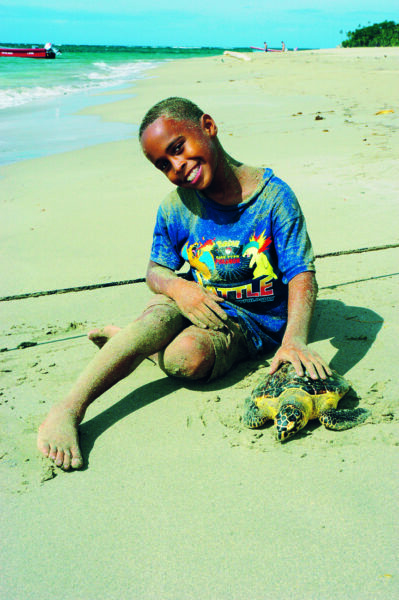
Manzanillo
Manzanillo is located at 14 kilometers south of Puerto Viejo, where the coastal road ends. It is the typical image of a Caribbean village by the sea, with wooden houses on pillars, painted of bright colours that liven up the streets, where you breathe a naturally pure air.
This small town of Afro descendent fishermen, which owes its name to a manzanillo tree that was in that place. Until recently, Manzanillo has maintained a certain geographical isolation that helped keep alive the traits of their culture, traditions and customs and to maintain self – sufficient economy based on hunting, fishing, farming and gathering the food that nature offered them. The road did not reach Manzanillo until the year 1984.

The population lives facing the sea, rich in marine resources, which has provided them with sustenance since past times. Its tropical forests, pristine beaches and marine waters are nowadays main source of income for local residents, due to the entry of thousands of visitors attracted by its natural and cultural richness. Here, you don’t find the worries of big cities, the “zero stress” policy is part of the authenticity of the village. In Manzanillo peace and tranquility is in the air.

Decades ago the residents of Manzanillo also decided to protect part of its extraordinary natural resources by creating a management plan for the area, with the intention to preserve the diversity of its ecosystems, its flora and fauna, and avoid the deterioration of their habitat and the threat of extinction of species, so that we and future generations can enjoy the magic of this lush land.
On the 29th October 1985 the Gandoca-Manzanillo National Wildlife Refuge was created. It protects 5,013 terrestrial hectares and 4,436 marine hectares. In 1995 it was declared a Wetland of International Importance RAMSAR for hosting an extraordinary biological richness, where coral reefs, lagoons, mangrove forests, primary forests, cliffs and beaches where sea turtles nest are protected, especially in Gandoca where there is a conservation program for the leatherback turtle, the world’s largest turtle.
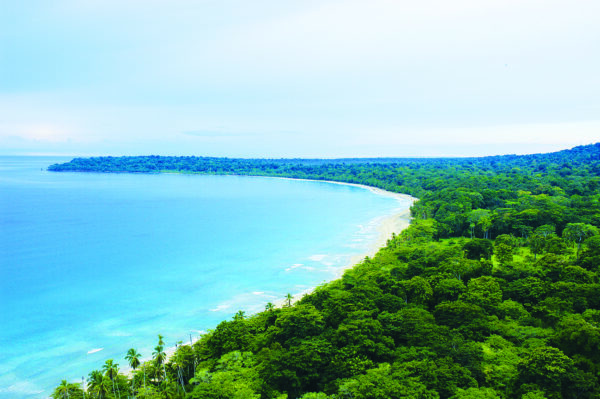
They also have other study and protection projects carried out by organizations and associations that contribute to better protection and conservation of the richness hidden in this wild territory, such as the Association Ara Project which is successfully repopulating the Refuge with the emblematic Great Green macaw, Ara ambiguous, which formerly abounded in these forests and was on the verge of extinction.

Nowadays, these natural resources have become a great tourist attraction for many travelers who seek to get in contact with rural populations, perform activities in nature and enjoy of a holiday full of tranquility or adventure, respecting the environment and producing the least possible impact, thereby generating a sustainable economic activity, which is a source of income that helps to improve the quality of life of the community.
To really savour Manzanillo’s culture and experience their authentic cuisine you have to try a fish or a lobster cooked in Caribbean sauce, the perfect way to regain strength after a long day full of emotions.
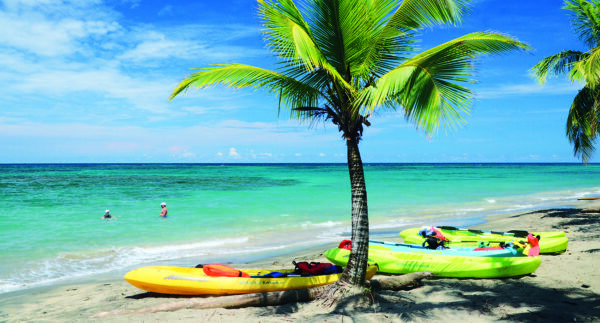
GANDOCA-MANZANILLO REFUGE
Its land portion is formed by hills covered with a rich tropical forest, mainly primary forests. There are many wetlands, within the Refuge is a swamp of 400 hectares. The coast is formed by beaches, coral reefs and a chain of small cliffs and emerging reef points that rise up to 30 meters high, among which you find small white sand beaches.

Coral reefs are one of the most important ecosystems, they have different coral species, 34 molluscs species, 11 sponge species, 37 algae species, lobsters, hawksbill turtles and a great variety of fish. In the sea, the protagonists are the dolphins where you find three species: the bottlenose, el pintado and the tucuxi, the smallest dolphin in the world.
The Refuge is home to over 350 of bird species, among the mammals three species of monkeys, sloths, el león breñero y el manigordo,stand out. The alligators, green iguana, the red and the dark green poisonous frogs, snakes and countless insects,also inhabit the Refuge.
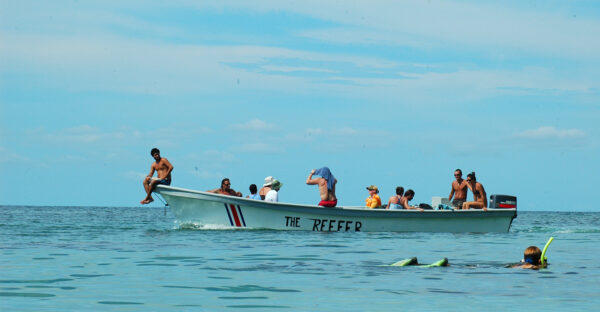
There are trails that run through the Refuge, some go deep into the dense forests and other border the coast up to Punta Mona. The best way to know the Refuge is to explore it accompanied by a naturalist guide who will help you unveil the secrets of the jungle. Another interesting option is a boat ride along the coast to get to secluded beaches, spot dolphins and snorkel in the coral reefs.
Some points of interest within the Gandoca-Manzanillo Refuge are:
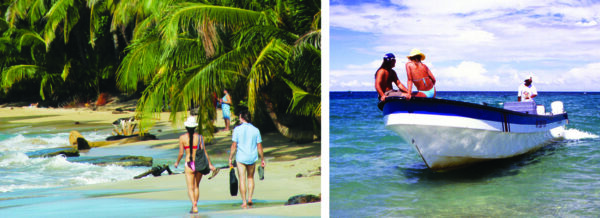
Punta Manzanillo
The protagonist of Punta Manzanillo is a small cliff that abruptly arises on a golden beach, giving us a 360 degree view over the Caribbean Sea. It is known as Miss May Point, and it is one of those magical places where you feel the powerful energy of nature at its most.
The viewpoint of Punta Manzanillo is located at a few minutes walk from the town of Manzanillo. You get there by following the path along the beach.
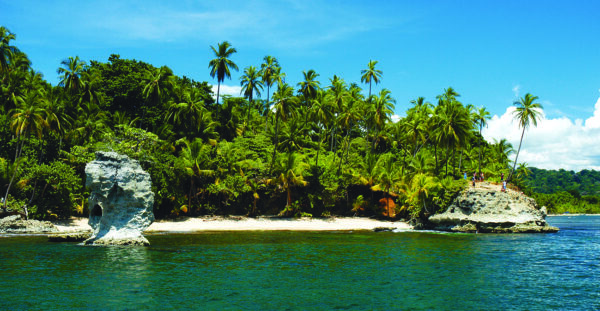
Punta Mona
Punta Mona is a very remote spot within the Refuge, known as Monkey Point it was inhabited long ago by fishing families of Afro-Caribbean origin. Nowadays, it is an almost uninhabited place, surrounded by dense tropical forest, pristine beaches, coral reefs and an islet that emerges over the blue sea.
To get to Punta Mona, you have to walk about 2 or 3 hours along the trails that start in Manzanillo and go across the Refuge through primary forests with gigantic trees like ceiba, cativos or mountain almond. You can also get to Punta Mona by walking down the beach from the community of Gandoca, located in the southern sector of the Refuge.
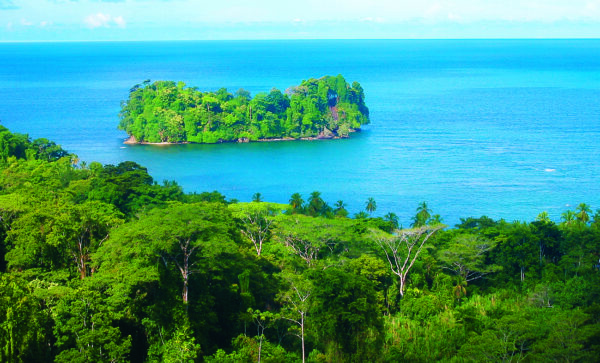
Another way to get to this idyllic spot is by boat from Manzanillo, a ride that will give you the opportunity to enjoy the sea breeze, appreciate the small cliffs of the coastline, the hidden coves with crystal clear water and hopefully you may spot the 3 species of dolphins that inhabit this region.

Playa de Gandoca
In the southeast region of the Refuge you find Gandoca, a small community located between the beach and the estuary which carries the same name. The wild beach of Gandoca is the spawning site of the leatherback turtle, the largest in the world, which arrives to spawn between the months of March to July, and like many other animals of the Refuge, is in serious danger of extinction. To see the spawning of this turtle at night on the beach, accompanied by a local guide, it is a breathtaking spectacle. Gandoca can by accessed by road from Sixaola.
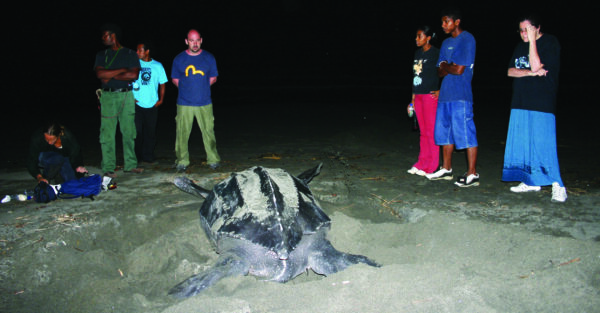
Gandoca Lagoon
The forces of nature made, thousands of years ago that the Sixaola river changed its course leaving an impressive lagoon as a trace of its former course, one of the largest in the Costa Rican Caribbean. It has 265 hectares dominated by marshlands and canals home to different types of habitat, including wetlands such as mangroves and yolillales, with an abundance of vines and epiphyte plants such as orchids and bromeliads. This lagoon is also an important place for the breeding of many fish like the tarpon and it is sometimes visited by manatees.

The mangrove covers 12 hectares that occupy the area between the open waters of the coast and the inland freshwater wetlands, a network of roots and branches that filter the water and absorb the excess of salt. The most abundant are the red mangroves and in lesser extent you find the white mangrove, the botoncillo and the black one.
Visiting the Gandoca lagoon in a rowboat with a local guide is an unforgettable experience and a unique opportunity to see the magic of these ecosystems in its wildest state.
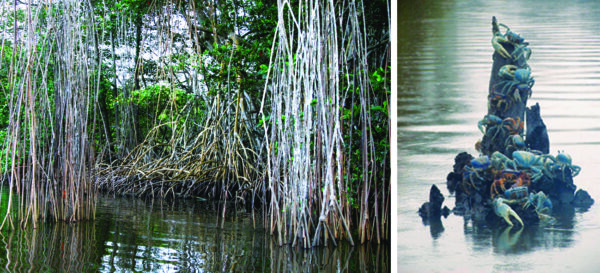

Fotografías de Paco Salmerón
Texto de Juan Carlos Lorite y Paco Salmerón